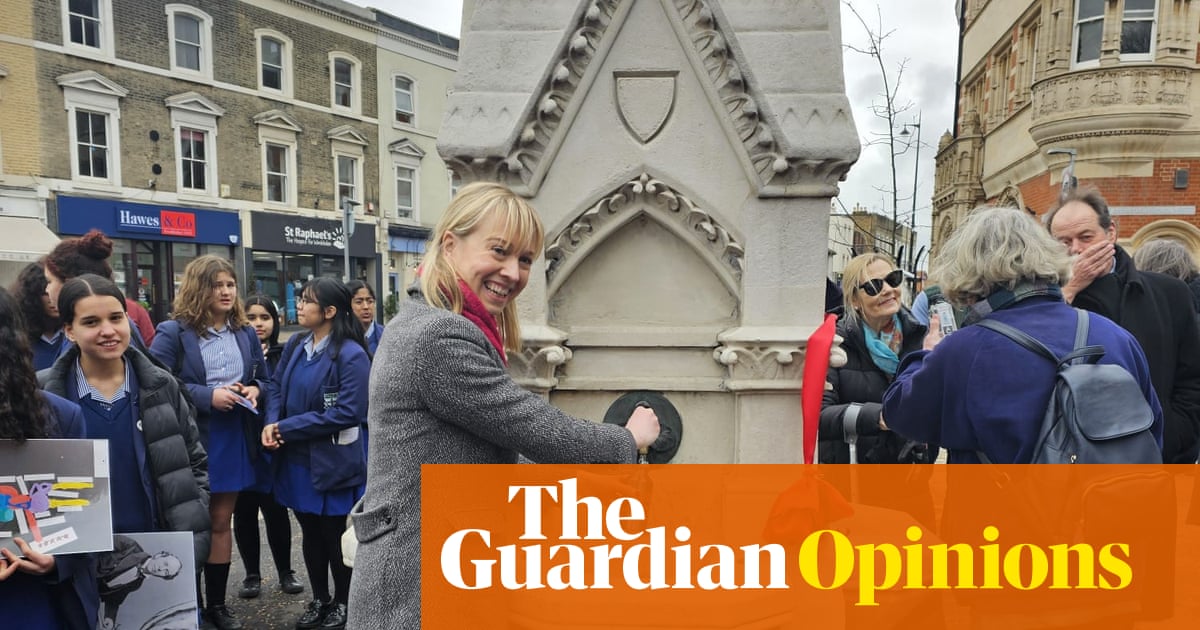
You could say I grew up under the shadow of Margaret Thatcher. Raised in Grantham, Lincolnshire, I went to Thatcher’s former primary school, a mix of brick and portable buildings that by the 1990s were a fitting symbol of a decade of her underfunding. I went on to attend her old secondary school, both of us moving from near the street where her father once ran a grocery shop to the opportunity of the leafy state grammar. For seven years, I ate my lunch in the dining hall named after her – and only choked on my sandwich once.
Until this month, though, Grantham noticeably had no monument to Thatcher. You could walk through the town centre and see more charity shops than references to an ex-PM. In contrast, Sir Isaac Newton, who went to school in Grantham, has long been immortalised in brass, and even had the local shopping centre named after him – and no, it doesn’t just sell apples. The storm that has emerged since Thatcher’s long-delayed statue was erected last week is a clear lesson as to why. Within two hours of its installation, a man was seen egging it. The £300,000 statue, made by the sculptor Douglas Jennings, had already been rejected by Westminster council in 2018 to stand next to parliament.
When Grantham agreed to give the (bronze) iron lady a home, it did so on the quiet; the planned £100,000 unveiling ceremony was ditched after a local outcry. The council was so concerned by the prospect of political activists making a pilgrimage for the town, it placed the statue on a 3-metre (10ft) high plinth to make it more difficult for protesters to damage. One desperate local Tory councillor suggested protecting Thatcher from vandals by placing the statue in a pond (this is a sign of respect in Lincolnshire).
You don’t have to be a raging Thatcherite to think there should be a monument to her in her home town. Some argue that Grantham producing Britain’s first female prime minister is something that should be marked with a statue, regardless of the ideology. There’s a certain sense in this. The Thatcher exhibition in Grantham’s museum attracts tourists – and their cash – from all over the world and many reportedly long asked why there wasn’t a statue. As Nick Jones, a trustee of the museum told the Guardian: “The primary attraction is Margaret. I’d like to say it’s the Isaac Newton exhibition, but he doesn’t bring them in.” Sure, Newt, you were a key figure in the Enlightenment and helped to give the world infinitesimal calculus but did you ever sell off a nation’s council housing stock?
The problem with the “historical importance” argument is that statues are not simply commemorative – they are celebratory. Thatcher, erected 10ft in the air with her lofty gaze presiding over passers-by, has – quite literally – been placed on a pedestal. To be immortalised in bronze is to be given an honour, one that signifies (or at least suggests) local pride in the person and aligns the area with their legacy. That’s why the toppling of statues of slave owners became synonymous with the Black Lives Matter movement. The residents of Bristol didn’t want to write these figures out of history – they just didn’t want to carry on lauding them.
Statues are, by definition, static – they take a point of history and freeze it, staying revered and unmoved as society’s values change. In many ways, they are a particularly conservative snapshot of history, taking the viewpoint of the establishment and promoting it as the final narrative. There is a reason we got a statue of Thatcher and not a striking miner. Thatcher being a woman does not make any of this more progressive – she is immortalised for the high street just as bigots and warmongers are up and down this country.
Grantham’s dilemma over Thatcher in many ways speaks to the bigger question of how towns and residents deal with their complex past. The issue is never confined to the statue itself – it’s about what the statue represents. What is the legacy of the figure and what does the statue symbolise? What is it actually saying? Fairly or not, the style of the Thatcher monument hardly suggests a town ready to come to terms with the reality of her life’s work. Her hands clasped piously below her lap and draped in a robe, there hasn’t been a softer portrayal of the iron lady since Meryl Streep won the Oscar. That the local museum “contextualises” Thatcher’s premiership, including discussing her critics, will mean little to passers-by who see her statue looming over them, like a Midlands’ Maggie the Redeemer.
I can’t help but think Grantham would be better off pulling down the statue and getting creative. If locals want a traditional monument, a statue of Thatcher facing off with a bronze poll tax protester would be more fitting to her spirit – and faults. Better yet, sell the valuable statue to one of her wealthy admirers and use the cash to open an LGBTQ+ youth centre in her name. A statue that has to be hoisted up and shielded from the public’s touch is the ultimate example of how far removed monuments are from the communities they claim to be for. Our home town can do better than a fawning statue of Thatcher. Or we will all have egg on our faces.
Frances Ryan is a Guardian columnist












